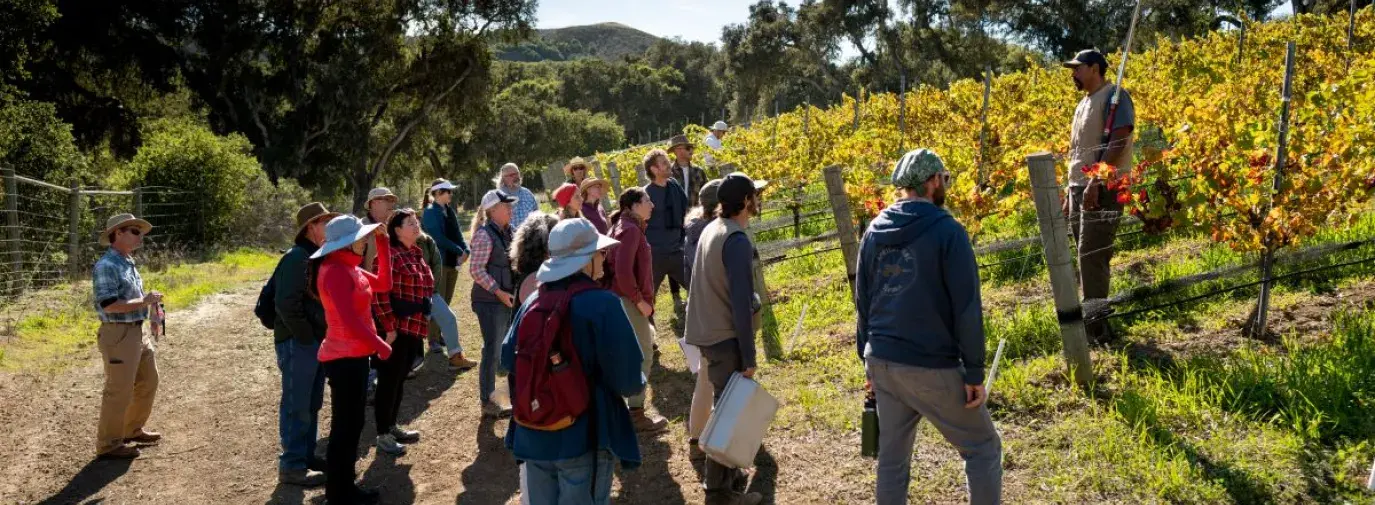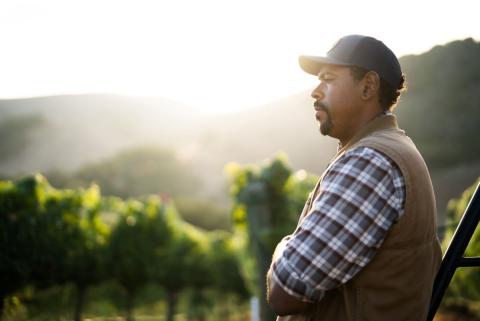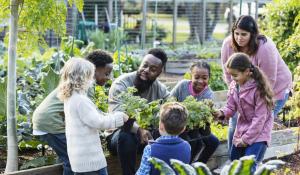
Jesse Smith fervently claims the Central Coast of California as his home. It’s where he was born and raised, where he met his wife and started a family, where he works to build land resiliency and community around local food as the director of land stewardship at White Buffalo Land Trust. But he didn’t always know he was going to be working the very land he calls home.
Smith started his career as a graphic designer but made a switch to permaculture landscape design—a type of land management that aims to make landscapes that are self-sufficient, sustainable, and natural—after taking a class with his father-in-law, permaculture designer and teacher, Warren Brush.
“I always hated presenting a portfolio of print material, because it was so static, it was so finished,” Smith says. “I love the concept of designing agro-ecosystems that were continually evolving but also continually relevant for human interaction and involvement. From that moment, our families decided to start a farming operation.”
In 2011, Jesse and his wife Ana, along with Ana’s parents and cousins, partnered with a family fund that had been invested in fossil fuels to instead move resources “from oil to soil.” In short, they helped manage a farm, in the Central Coast region, of course.
The family made the farm idyllic—across the 50 acres they grew avocados, apples, and persimmons, raised heritage-breed pigs, chickens, and turkeys, and grew microgreens and mushrooms in a greenhouse. The family sold their goods at farmers markets and to restaurants, all while offering education about permaculture to their customers and the public.
Uprooted but Inspired
In December 2017, the Thomas Fire ignited Ventura and Santa Barbara counties, burning nearly 300,000 acres, making it the largest wildfire in California history at the time (it’s now the eighth largest). The family and all their farm staff were displaced. The community lost 26 lives in the fire, and the flooding and mudslides that followed. The farmland was spared, but the fire had burned up against all of its borders. Jesse and his family’s priorities shifted as the owners of the property decided to sell.
“[The fire and aftermath were] detrimental to a community because of the life loss and the destruction. But it was also a gross wake-up call once again as to the fragility of our food system,” Smith says. “It was a reminder of what my unique perspective and my skill sets could provide in demonstrating and advocating for a different approach for local/regional food resiliency and security.”
After looking to his community for work on these goals, Smith met Steve Finkel in 2018. Finkel was in the process of founding the White Buffalo Land Trust (WBLT) in memory of his late wife Lyndsey McMorrow, who had a passion for regenerative agriculture. Smith and Finkel were the first two members of the team, which now includes Ana and a dozen others. Jesse oversees land use as the director of land stewardship, including for the 1,000-acre Center for Regenerative Agriculture at Jalama Canyon Ranch, which WBLT acquired in 2021, a place where the principles of regenerative agriculture are tested.
Probing for Proof
Jalama Canyon Ranch is home to a variety of different ecosystems, including grasslands, oak woodlands, savannas, riparian corridors (land along the edges of rivers), where the staff of WBLT are cultivating the land with practices sourced from regenerative principles, educating professionals and the public, and using data collection and ecological monitoring to test regenerative growing methods.

On the land, they grow California staples: wine grapes and olives, along with goats, sheep, and cattle. On partner farms throughout California’s Central Valley, from Bakersfield to Chico, WBLT works on other test crop projects: almonds, cotton, persimmons, and elderberries.
The point of such variety is to be able to run experiments and collect data to show that regenerative agriculture is a way forward in resilient farming—across crops and various eco-regions. Cotton and almonds in particular, Smith notes, are “keystone crops” which hold environmental, economic, and cultural importance. But because they are so ingrained in California and US agriculture systems, it can make it harder to recognize and implement changes that might need to be made in those systems and enact them.
Each project sparks questions, which sometimes spark new projects, Smith says.
“What if there was an emerging system of crop production, that could become a keystone crop that really played at the crux of watersheds and communities and culture and human health?” Smith and his team asked.
Through discussions with different stakeholders, Smith says the western blue elderberry emerged as a crop that has a long history in the region, as a native crop that has been tended by Native communities, can be effective in landscape restoration, and a regional growing network could be developed to support growing market demand.
The elderberry project is a new one, funded by a Partnerships for Climate-Smart Commodities grant from the USDA, aimed at funding pilot projects that help farmers and ranchers develop climate-beneficial practices across different commodity cropping systems.
In addition, the team is going through several certification processes to see which best serves WBLT and to help advise farmers on which might best serve them. Smith was at the founding meeting for our SCI and has ushered WBLT through the Go-to-Market Pilot.
In so many ways, Smith is building communities as he builds the land. With as many projects as he is working on, he still values curiosity and expansion as he makes building a resilient, sustainable home for his family and community his top priority.
“[My favorite part of my work] is every time I get to walk out here at Jalama Canyon Ranch, and walk the land with a new perspective with a new group of people who bring their own questions and queries, when I get to share with my daughters and my wife, where we get to invest in a landscape that has so many downstream beneficiaries,” Smith explains with excitement. “I wake up every day, excited to be able to go out to this landscape, and share this landscape with a larger community.”







